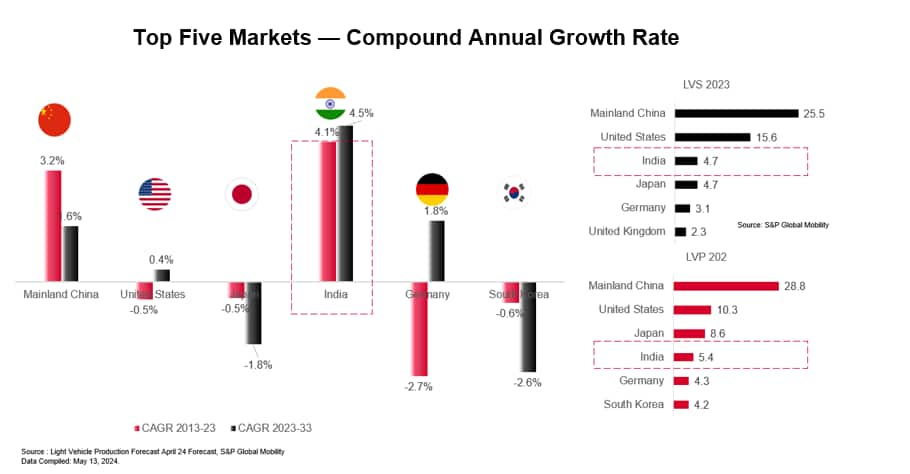India is poised to become the world's third-largest economy by
the end of this decade. Despite the recent global challenges
impacting economies, including the COVID-19 pandemic, semiconductor
shortage, geopolitical tensions with its neighbors, and the impact
of the Russia-Ukraine crisis, India has demonstrated remarkable
stability in its economy and supply chain compared to other
countries.
In the light vehicle production market, India has outperformed
the top-five global light-vehicle production markets over the last
decade (calendar years 2013-23), with a compound annual growth rate
(CAGR) of 4.1%. The Indian light vehicle production market, which
accounted for 3.65 million units in 2013, increased to 5.44 million
units in 2023, making India the fourth-largest market in 2023.
Meanwhile, the light vehicle sales market accounted for 4.72
million units in 2023, making India the third-largest market in
2022, surpassing Japan.
India has successfully navigated the recent years of disruption
in the automotive industry. Supplies of semiconductor chips were
quickly secured, while producers in other regions found it more
challenging to adapt to the shortage. India's low reliance on
mainland China has supported growth in production since 2020. A
stable, growing domestic marketplace is also increasingly
attractive to automakers looking to establish low-cost export hubs
to serve overseas markets. This topic has been visited in the past
but now appears more realistic with a stable supply chain and when
the world is looking beyond Mainland China.

Continue reading…
Download the complete
whitepaper














